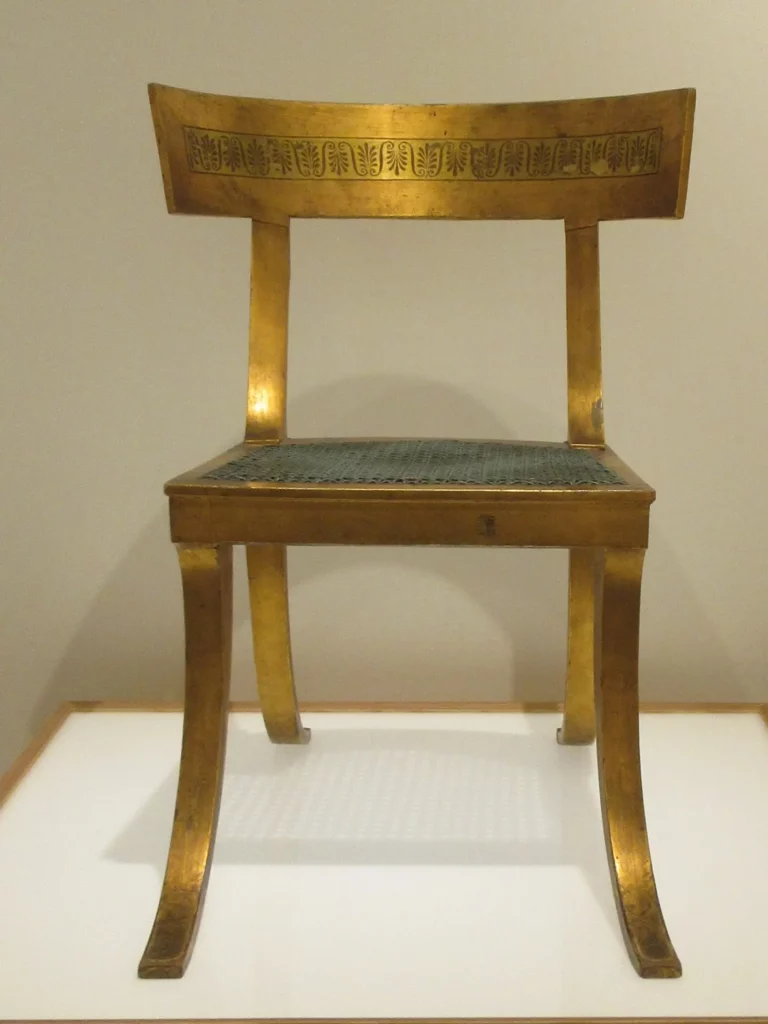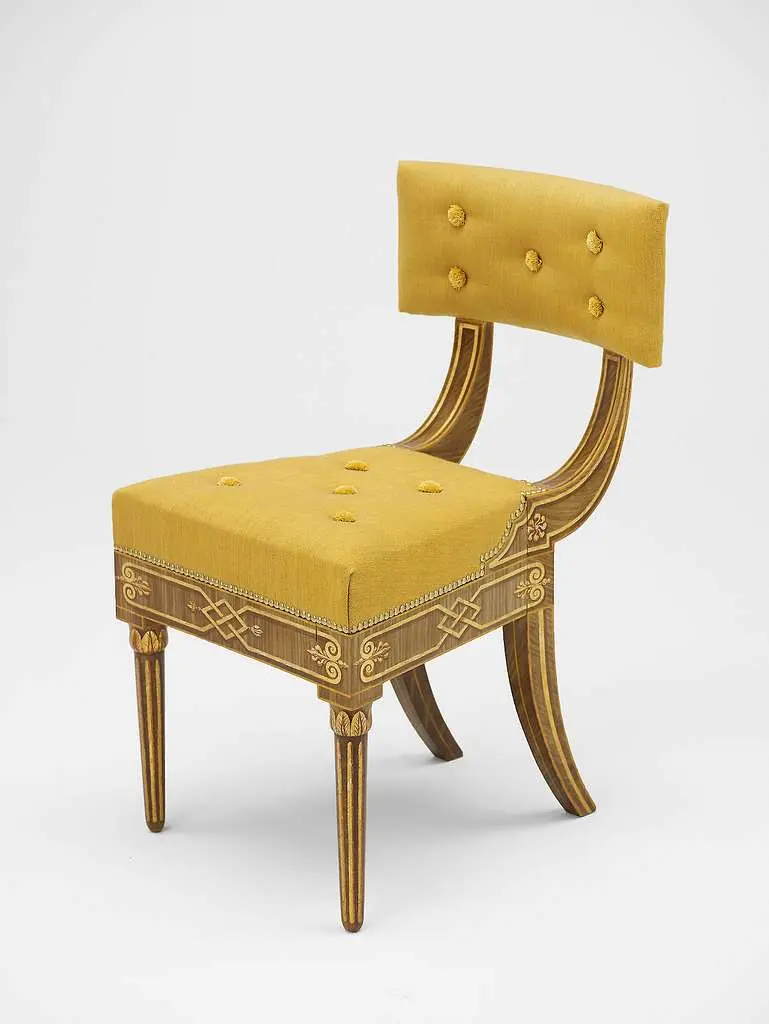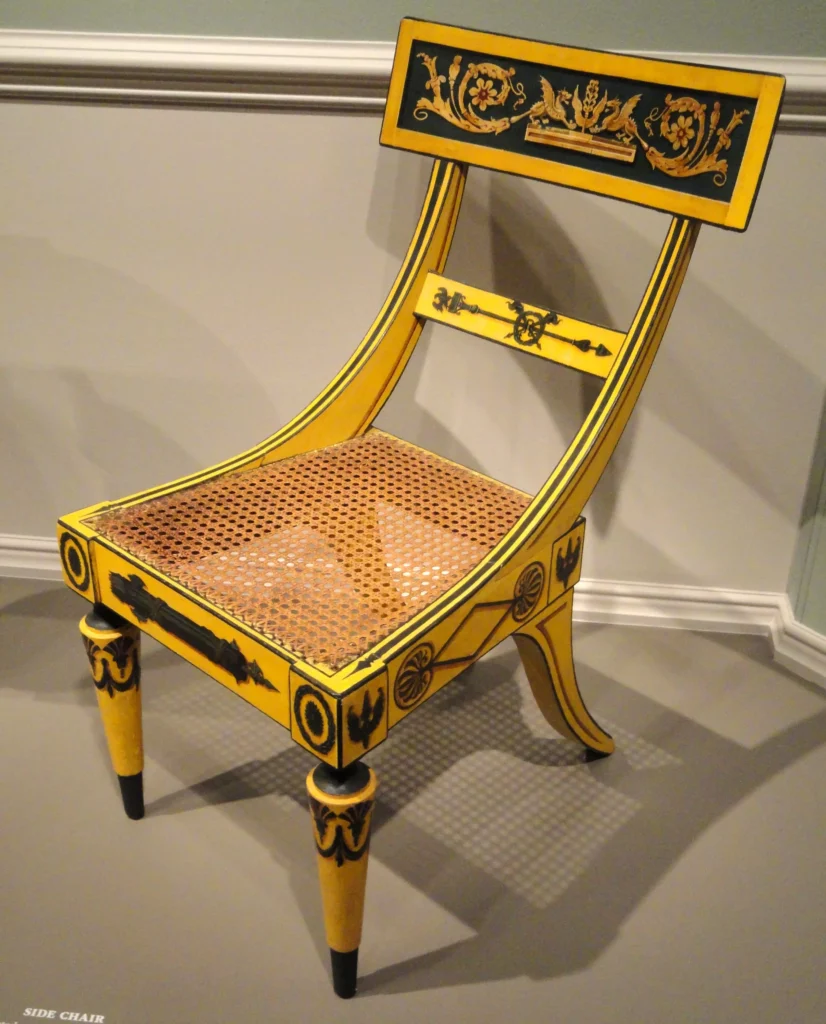The History
The Klismos Chair’s story begins in ancient Greece, the name originates from the ancient Greek city of Kismos.
While the term “klismos” signifies an armchair in epic literature, no specific description is given of its form. However, its influence can be seen in various depictions on painted pottery and bas-reliefs from the mid-fifth century BCE onwards.
The Klismos Chair saw periods of favor and decline over the centuries. It fell out of favor during the Hellenistic period but still found representation in the theatre of Dionysus in Athens.
The Klismos Chair experienced a revival during the European neoclassical phase. It gained popularity in Paris and later in London and America. Artists still continue to draw inspiration from the Klismos Chair to this day. Danish architect and furniture designer Jørgen Kastholm reimagined this piece of furniture in 1965, and it swiftly established itself as an iconic representation of mid-century modern design.
Design and Characteristics
The Klismos Chair is a perfect blend of form and function. Its design is characterized by its gently curved backrest and seat, which provide comfort and support while maintaining a sleek and minimalist appearance. The chair’s frame is typically crafted from solid wood, often in teak or walnut, which enhances its natural, organic feel.
One of the defining features of the Klismos Chair is its sculpted, tripod-style base with slender, tapered legs. This distinctive base not only adds to the chair’s aesthetic appeal but also ensures stability and sturdiness. The chair’s backrest, with its gentle curve, is an invitation to relaxation, making it a perfect choice for both dining and occasional seating.




